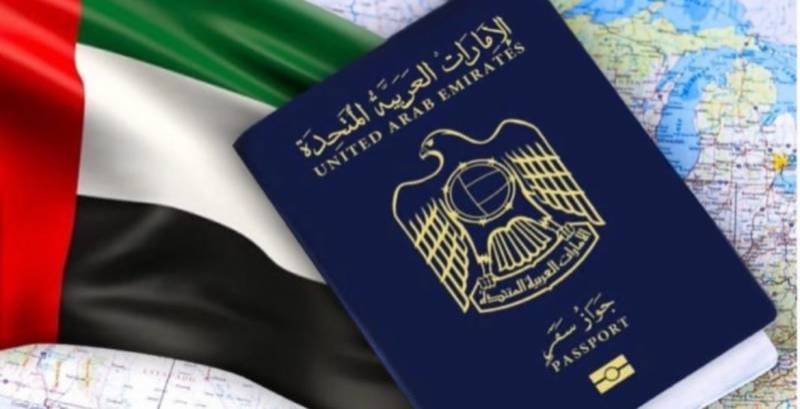WORLD War-I established the inexorable importance of oil for strategic and industrial expansion. By 1917, the USA’s oil output had risen to 335 million barrels, some 67% of world supply. However, the monarchist British could rely on republican America for its oil needs. British explorers were desperately looking for alternate oil sources. The Iranian Masjed Soleiman field was discovered by Anglo-Persian Oil Company (now British Petroleum) in 1908. 1927 oil discovery in the contentious province of Musal triggered imperial rivalry with 23.75% each between British, French, Dutch and the American companies. Furthermore, in 1938, the American company, Standard Oil of California (later its subsidiary company CASOC now called ARAMCO) found oil reserves in Dammam, KSA. During the same year Kuwait oil reserves bigger than Iraq were discovered by the Anglo-Persian Company. All these oil reserves were discovered in a region characterized by a history of regional political tribalism, further polarized due to the post-world war identity crisis inflicted upon their societies by the Allied victors. Consequently, these newly born, poverty-stricken states with inherited racial and religious divisions of Shia, Sunni, Kurdish, Syrian, Turkish, Arab and Persian, could not resist offering an array of variables for industrial powers to interplay with and sustain their energy imperialism through corporate and political proxies. After the discovery of oil, the presence of a pro-British government around the Levant belt near Suez Canal had become strategically more important than it was during Napoleon’s invasion of the Middle East. Bonaparte seized the ancient port city of Gaza from Ottoman Empire forces in February 1799. Many Arab writers consider that Napoleon’s invasion of Egypt was the first expression of western imperialism in the Middle East. To gather their support against the British a century before, Napoleon also exploited Jews by a proclamation offering Palestine as a homeland to Jews under France’s protection. Tragically, the modern western imperialist continued the mediaeval tradition and never hesitated exploiting Jerusalem to set the short-term scores of their European battlefields.
In the wake of the Dreyfus Affair, in 1896 a young Austrian-Hungarian journalist Theodor Herzl published a pamphlet The Jewish State and proposed a political solution of a Jewish Home to clamp down the rising anti-Semitism in Europe and Russia. In 1897 he presided over the first Zionist Congress summoned in Switzerland. The majority of the orthodox Jewish opposed his concept and called it a sin. They were of the view that Judaism has to wait for a divine intervention—Maseehah—to drive an ultimate renaissance of the Kingdom of David. Orthodox Jews criticized Theodor Herzl’s lack of Jewish education, his dashing boulevardier outlook in Vienna and Paris and his secular interpretations. He never spoke Hebrew or Yiddish.
Reformist Jews also opposed the idea as the proposed solution of an independent state somewhere in Africa, Latin America or in the Middle East would definitely damage the process of Jewish assimilation in the western societies, their campaign for promoting nationalistic loyalties and their struggle for cultural enlightenment and integration. The President of the Union of the British Synagogues wrote to Herzl that a tiny Jewish State will become another ghetto for Jews. Nevertheless, in 1905, the 7th Zionist Congress selected Palestine to establish a Jewish national home after considering Uganda and Argentina. At that time, there was a small ultra-orthodox Jewish community living peacefully side by side with Palestinians mainly in Jerusalem, Hebron and Safed. Theodor Herzl himself wrote “The City of David in the moonlight is impressive” and acknowledged the harmony of existence between Palestinian Arabs and Jews under Ottomans when his visited Jerusalem in 1898.
1903 to 1906, the anti-Semitic pogroms in Russia compelled Jews to migrate to other parts of the world including the USA and Palestine. Palestinian commoners started resisting their leaders who were selling their lands to the incoming Jewish immigrants resulting in 11 new settlements from 1908 to 1913. In November 1917, following the footsteps of Napoleon Bonaparte, purely due to “European reasons”, the British Foreign Secretary Arthur James Balfour embraced the Zionist project for a Jewish Home in Palestine through his open letter sent to Lord Lionel Walter Rothschild. He added that nothing shall be done which may prejudice the civil and religious rights of the existing no-Jewish communities in Palestine. The natural outcome of Balfour’s promise was a “peaceful” colonization–antithetical to the 3500-years old socio
theological sensitivity attached to Palestine—a gross miscalculation of the deep-rooted Palestinian nationalism. The western world considered Palestine an uninhabited, barren land surrounded by desert and marshes. Whether to achieve short-term strategic goals based on their superficial knowledge about Palestine or otherwise to justify promoting Jewish settlements knowingly on a land where local Arabs constituted the majority of the total population with distinctive adherence to their religion and culture, in both cases, it was a terribly shortsighted approach that led to a century of catastrophic violence. Moreover, during the same years, to bag support of Arabs against Turks, Henry McMahon, British High Commissioner in Egypt, in his correspondence with Sharif Hussain, The Emir of Mecca, conceded to the demand of Arab independence within the boundaries that included Palestine.
The promise was a tactical delusion. Resultantly, Arab nationalism surfaced more rapidly, textured with anti-imperial aggression. In 1921, large patches of land were purchased in Palestine by using the Jewish National Fund which led to the eviction of poor Arab peasants and opposed by the Christian-Muslim associations. The local Arabs realized the consequences of the Zionist vision and started an organized resistance to protect their identity and land in Palestine. The first wave of violent conflicts surfaced in 1920 in Jerusalem followed by Jaffa and Tel Aviv in 1921. A delegation of Arab leaders visited London with a demand to repudiate the Balfour Declaration. They suggested a national government with a parliament democratically elected by the country’s Muslims, Christians and Jews. In response, then Secretary of Colonies, Winston Churchill issued a White Paper clarifying British position.
The paper stated that Balfour’s Declaration did not contemplate the imposition of a Jewish nationality on Arabs. Instead they proposed a Jewish Home inside Palestine. The paper called for a reduction in Jewish immigrants to the economic capacity of Palestine to absorb new arrivals. In 1923, As per Sykes-Picot understanding, Palestine came under the British Mandate despite the Covenant’s requirements that “the wishes of these communities must be a principal consideration in the selection of the Mandatory”. From 1924 to 1928, more than 60000 Jews arrived in Palestine. In August 1929, violence erupted between Jews and Muslims over a dispute regarding access to the Western Wall in Jerusalem and Al-Aqsa Mosque. 133 Jews were killed during the riots in Jerusalem, Hebron and Safed. The British investigation report on the cause of violence concluded: The Arab feeling of animosity and hostility towards the Jews consequent upon the disappointment of their political and national aspirations and fear for their economic future.
In 1935, the Nazis enacted the Nuremberg Laws in Germany that led to the marginalization of German Jews and ultimately to their segregation, confinement and extermination. Tens of thousands of German Jews migrated to Palestine from 1933 to 1939. The new arrivals were mostly intellectuals, scientists, businessmen and artists. The population of Tel Aviv, founded in 1909, tripled. In 1936 the Arab Higher Committee, chaired by Amin-al-Husseini, the grand mufti of Jerusalem, called for a revolt throughout Mandatory Palestine against Zionism and the British. They demanded an end to Jewish immigration. Several hundred Jews and Arabs were killed. The Mufti of Jerusalem’s collaboration with German Nazis against Jews stepped up the crisis to extreme levels.
The resistance was a blend of Arab nationalism and religious consciousness fuelled by anti-imperial aggression. The Muslim Brotherhood, initially founded as a proselytization movement, gradually shifted to political movement with a militant wing in the Levant region. Thousands of Palestinians were killed, wounded and imprisoned. The violence flashed Palestine Question in addition to the existing Jewish Problem. In the meantime, Hitler’s mobilization in Europe contrived the British to keep their colonies calm mainly to recruit infantry divisions from the Middle East and India. British Blocked immigration routes to Palestine to control the rising Arab unrest in the region. The US also implemented strict immigration Quotas for Jews. The Peel Commission’s report in 1937,
constituted to find a solution for the Palestine Problem, published in July 1937, stated the incompatibility of the Jewish and Arab objectives in Palestine and proposed that Palestine be partitioned into three zones: an Arab state, a Jewish state and a neutral territory containing the holy places. In July 1938 delegates from 32 countries gathered in Evian, France to find a solution to the Jewish Problem but none of the 32 countries present agreed to open their borders for Jews. The British did another effort by bringing the Arabs and Jews together for negotiation in St. James conference in 1939. The Arabs refused to talk to the members of the Jewish Agency. The British government published another White Paper and announced a drastic cut down on the Jewish immigration to Palestine. But unfortunately, it was too late. The conflict has already perpetuated deep down to the existential levels for Arabs and Jews.
In September 1939, World War 2 started. Ervin Rommel, the commander of German troops in North Africa, planned to invade Palestine. David Ben-Gurion, the head of Jewish Agency in Palestine seized the opportunity and legitimized the Jewish illegal militia as a Jewish Military Brigade within the British Army. David’s decision, however, did not change the British policy of blocking more Jews to reach Palestine without a permit. The British launched Operation Igloo to intercept the Jewish immigrants escaping mass persecutions in Germany and Poland. The British arrested hundreds of Jews inside Palestine and relocated thousands of illegal immigrants from Palestine’s port to detention camps in Cyprus. In retaliation Zionists blew up the British administrative headquarters at the King David Hotel killing more than 90 people. Neither Arabs nor the Jews were ready to tolerate the British presence in Palestine. Moreover, in the aftermath of World War 2, British imperial governments in the Middle East and South Asia were facing serious logistic and human resources shortages.
The British reached the United Nation to form an international inquiry committee to address the Palestine Question. The committee members visited Palestine and decided to divide it into two countries — Palestine and Israel. The resolution for Palestine Partition was adopted in November 1947 by 33 votes, 13 against and 10 abstentions. The majority were against the partition plan but the US promised loans to the Philippines and Haiti in return and the resolution got the majority. Hence, Palestine was divided into an Arab state and a Jewish State with Jerusalem under international control. The former one never materialized. Palestinians and neighbouring Arab States rejected the Plan. The methodological expulsion of Palestinian started from their ancestral homes using violence and massacres. In March of 1948, 200 Palestinians were killed by Zionists in Deir Yassin. More than 70000 Arabs flew to Lebanon and other countries to save their lives. Since then, despite the devolution of its operational scope from Arab-Israel to Arab-Palestine, the cyclic patterns of the conflict continued characterized by Palestinian deprivation of the right of life, land, identity and economy; their spells of resistance and mass exodus, Israel’s transformation from the self-contradictory, colonialist idea of a nationalistic home for the European anti-Semitic victims into an Apartheid oppressor; extended space for religious antagonists from both sides to ossify the conflict using the texts of holy scriptures.
From Peel Commission Report 1937 to the Abraham Accords in 2020, every single diplomatic effort to unknot the complexity of this conflict failed due to the monumental imbalance of power shifted in favour of Israel, its mighty military machine driven by the vexatious American financial back up and the unbearable currents of memories with all possible colours of adversity associated with the concepts of colonization, decolonization, nationalism, divinity, forced migration, mass persecution, being zipped up in a moment and thrown around a small patch of Jerusalem—the most contested real estate of the human history.
—The author is a columnist, academic, and travel enthusiast.
views expressed are writer’s own.






